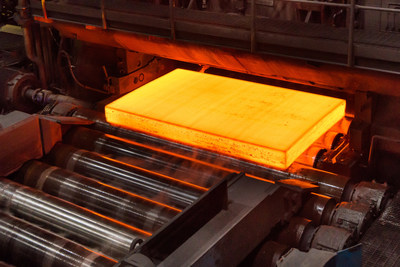
India is gearing up for a radical transformation in its steel production sector, with green hydrogen poised to play a pivotal role. A recent report by the Institute for Energy Economics and Financial Analysis (IEEFA) and JMK Research & Analytics outlines an ambitious roadmap for India’s steel industry to replace a significant portion of its grey hydrogen requirements with green hydrogen.
This transition is expected to revolutionize the sector, significantly reducing carbon emissions and cementing India’s position as a leader in sustainable steel production.
The Path to Green Steel
According to the report, the steel industry aims to replace approximately 25-30% of its grey hydrogen usage with green hydrogen during the early 2030-2050 period. This is a substantial initial step towards decarbonization. However, the transformation will gain momentum, with the industry projected to rely on green hydrogen for a staggering 80% of its needs by 2050.
While this transition holds immense potential, it comes with a significant caveat. Green hydrogen’s cost must decrease substantially, and a carbon emissions penalty must be imposed on traditional steelmaking methods to incentivize the shift towards hydrogen-based steel production. This shift is not anticipated to fully dethrone coal as the primary fuel for steelmaking until 2050.
The report underscores the critical role of government policies and clear definitions in propelling green steel production. To encourage the production of green steel, policymakers need to provide a legal definition that outlines the elimination of fossil fuels in the production process. Such a definition would guide the industry in making the right investments for decarbonization.
Creating Demand for Green Steel
Green steel production, though environmentally friendly, currently carries a premium price tag compared to traditionally produced steel. To overcome this challenge and create demand for green steel, the report suggests several strategies:
Mandatory Usage: Initially, a certain quantity of green steel should be mandatory in all government and public sector purchases.
Incentives through Certificates: Introduce Green Steel Certificates that can be traded in the national carbon market for financial gain, linking green steel purchases with incentives.
Viability Gap Funding (VGF): Provide VGF to bridge the gap due to the high initial capital cost of low-carbon steelmaking technology, encouraging steelmakers to commit to green steel manufacturing.
Green Hydrogen: The Cleanest Option
Among various technology solutions to reduce emissions from steelmaking, green hydrogen emerges as the cleanest option. While producing steel from scrap in renewables-powered electric arc furnaces (EAFs) is another eco-friendly alternative, it faces challenges related to the availability of high-quality scrap.
Green hydrogen’s primary challenge remains its high cost. To make it viable for large-scale adoption, the report calls for a target price of $1-2/kg for hydrogen and a carbon penalty of at least $50 per tonne of emissions for traditional steel manufacturing methods. These measures can catalyze a monumental shift from coal-based to hydrogen-based steelmaking.
The report envisions the deployment of large-scale green hydrogen projects across India between 2030 and 2050, phasing out coal-based steelmaking at an accelerated pace. This transformation holds the promise of not only reducing carbon emissions but also establishing India as a global leader in sustainable steel production.